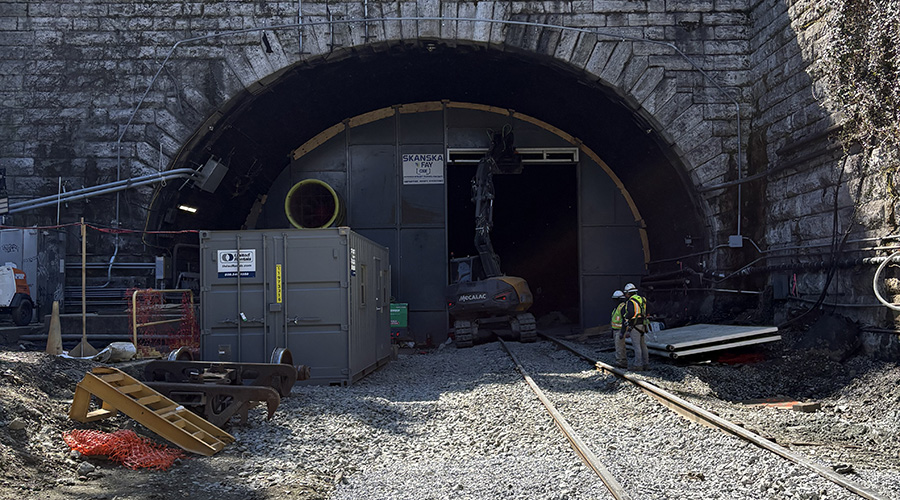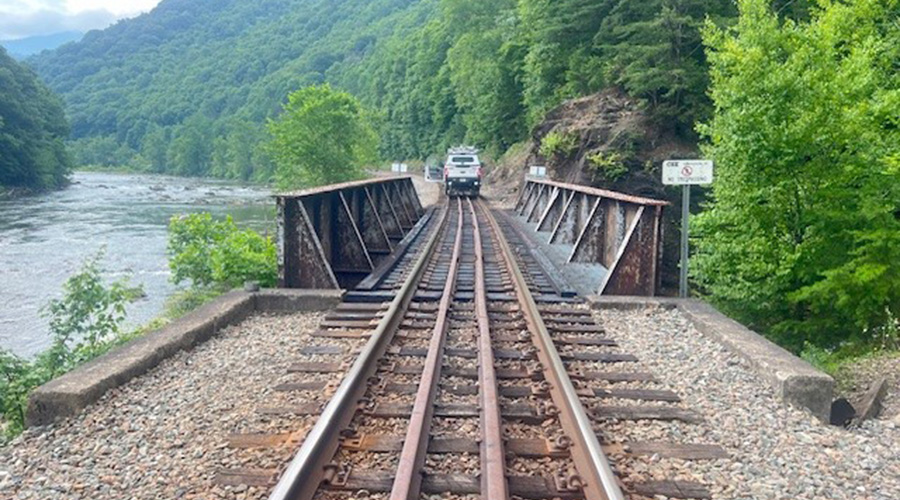Current state of freight rail? Not good, roundtable participants say
8/17/2022
By Julie Sneider, Senior Associate Editor
Surface Transportation Board Chairman Martin Oberman remains pessimistic that the four major Class Is will resolve their service problems anytime soon, he told a group of rail and port labor leaders and shipper group officials last week during a roundtable discussion on the state of freight-rail supply chain issues.
“I’m sad to say that the current state of freight rail is not great,” Oberman told attendees of a virtual event hosted Aug. 12 by the Transportation Trades Department (TTD), AFL-CIO. “Freight-rail service has been less robust over the past two years and has really deteriorated to the point of causing urgent problems for a number of rail customers.”
The current freight-rail supply-chain problems were precipitated by the Class Is’ “great workforce reduction” that started seven years ago as some began implementing new operating models that aimed to cut costs while boosting profits, Oberman said.
“The Class Is as a group cut 45,000 workers — about 30% of the entire workforce,” he reminded his listeners. “During that time, their revenues didn’t get hurt and their profits went up substantially. And that’s still happening, even as service continues to be in very difficult straits.”
What pushed service issues then into the “very bad situation” it is now is that once the COVID-19 pandemic began, the railroads cut another 12,000 workers from their ranks, he said.
“A great number of those workers were T&E [train and engine], with no thought to the fact that these are highly trained people and it takes more time to replace them,” Oberman added. “That was very, very poor decision-making on [the railroads’] part.”
Since the economy started roaring back in summer 2020, the railroads have been scrambling to bring on board enough train crews to fill orders. The Class I executives have said as much, saying crew shortages are at the root of the service lapses.
Oberman: Railroads ‘a long way’ from six-month recovery target
In spring, the STB held hearings to air the concerns of rail shippers and labor leaders over the mounting freight-rail service crisis that has exacerbated the nation’s supply-chain troubles.
After the hearings, the STB ordered four of the Class Is — BNSF Railway Co., CSX, Norfolk Southern Railway and Union Pacific Railroad — to regularly report to the board the railroads’ service recovery plans in detail, including workforce hiring and training. The board also told the railroads to provide six-month targets for improvement.
“The metrics we are getting [from the railroads] indicate they are a long way from their six-month target and we are halfway through that six-month period,” Oberman said. “So, I’m not optimistic about the pace at which rail service can recover. It is affecting every aspect from the economy, from the problems at the ports to all of our internal needs for freight services.”
The STB will continue using every tool it has available to oversee the rail service recovery. For example, in mid-June the board issued an emergency order to UP to move unit trains of corn on behalf of Foster Poultry Farms from the Midwest to California.
The board directed UP to give preference and priority to Foster Farms' corn deliveries after the shipper petitioned to help in getting feed to its livestock. According to the petition, UP delivers corn in 100-car unit trains to Foster Farms' facilities, where it is processed into corn meal for animal feed. The petition alleged that service failures began in February, and that Foster Farms turned to the STB Office of Public Assistance, Governmental Affairs and Compliance to help resolve the situation.
The shipper said it was concerned that without the emergency order, it would have to begin euthanizing livestock.
The rail service problems are nationwide, according to Oberman.
“It’s obviously hurting the economy and contributing to inflation,” he said. “It’s a serious, serious national problem.”
 “Freight-rail service has been less robust over the past two years and has really deteriorated to the point of causing urgent problems for a number of rail customers.” — Greg Regan, Transportation Trades Department, AFL-CIO Transportation Trades Department, AFL-CIO/YouTube
“Freight-rail service has been less robust over the past two years and has really deteriorated to the point of causing urgent problems for a number of rail customers.” — Greg Regan, Transportation Trades Department, AFL-CIO Transportation Trades Department, AFL-CIO/YouTube TTD’s Regan said the service “crisis” will require long-term solutions.
“Hopefully, what you are doing will lead to some resolutions,” TTD President Greg Regan told Oberman. “The rail and port labor leaders and shippers here [at the roundtable] know that workers and customers did not cause these backlogs. The freight railroads became one of the biggest bottlenecks during the pandemic supply chain due to their business operating decisions.”
Rail labor, ports, shippers: ‘PSR is to blame’
As they have before, the rail labor, port and shipper leaders at the roundtable put the blame for the railroads’ supply-chain problems on their adoption of precision scheduled railroading (PSR).
“Precision scheduled railroading is not precise and it’s not scheduled. And we don’t think it’s railroading, either,” said Vince Verna, vice president and national legislative representative at the Brotherhood of Locomotive Engineers and Trainmen. “It’s a chaotic way of doing business and this is all before anything happened with COVID-19. The supply chain has been broken because the railroads broke it.”
The Class Is “need to return to an operating model that puts safety and customer service back before short-term Wall Street profits if we’re going to have a functioning supply-chain and workforce to support it.”
Private Railcar Food and Beverage Association President Herman Haksteen said he believes railroads when they say they’re not happy with their current service levels.
“But they were foolish to think they could quickly spin things around,” Haksteen added. “I think the solution is at least about a year away.”
The STB must continue monitoring the railroads’ service metrics, including new train crew hires and retentions, and how quickly previously stored equipment like locomotives is returned to service, he said. Also, the railroads need to achieve a better balance in serving their employees and customers versus their shareholders, Haksteen added.
Other roundtable participants raised the issue of railroads’ use of longer trains — going from 1-mile to 3, 4 or even 5 miles long — as a cause of rail traffic congestion. What used to be mainlines are serving as sidings and rail lines at ports are insufficient in length to accommodate such long trains, said port and rail labor representatives. The railroads’ decision to close some yards or reduce rail-yard size to save costs also has led to traffic backlogs when long trains don’t have adequate space to reorganize in yards, they believe.
“When you reduce your infrastructure footprint, you reduce capacity,” said Peter Kennedy, executive assistant to the president, Brotherhood of Maintenance of Way Employes Division. “The trains are backlogged on mainline tracks and blocking grade crossings and other railroads’ tracks into the yards. You can imagine the ripple effect on the economy, the community, the yards and the workers.”
From the perspective of the American Chemistry Council, freight-rail service issues have not abated for its members who ship by rail. If anything, the problems are worse than they were in July 2021, said Jeff Sloan, the ACC’s senior director of transportation and infrastructure.
“Most companies are continuing to report longer trains and times, reduced service days, missed switches and some have been impacted by [railroad imposed] embargoes,” Sloan said. “Rail customers have been forced expend resources to manage these problems.”


